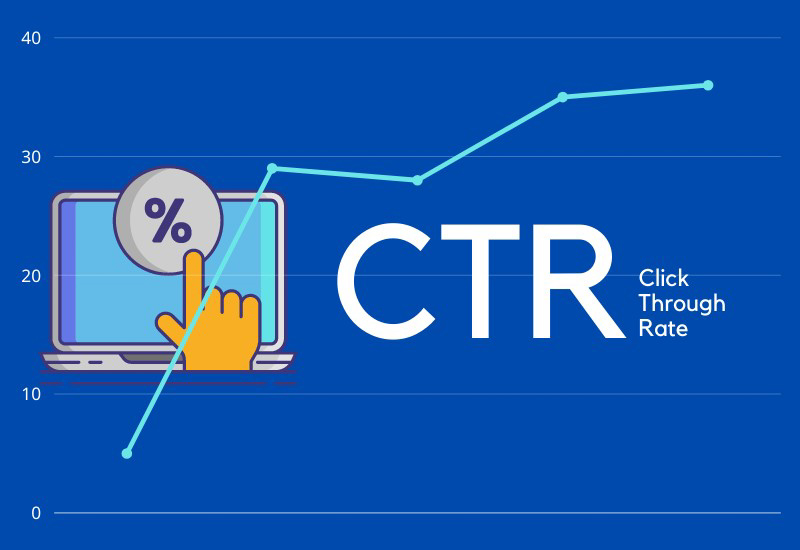In the ever-evolving world of digital marketing, click-through rate (CTR) stands as one of the most critical performance metrics.
CTR is a key indicator of how effectively your digital ads or content are engaging your target audience.
In this article, we will delve into the fundamentals of CTR, why it is important, and strategies to improve and harness its power for marketing success.
Understanding Click-Through Rate (CTR)
Click-through rate (CTR) is a metric that measures the percentage of people who click on a specific link, ad, or call to action out of the total number of individuals who viewed the content.
CTR is expressed as a percentage and is calculated by dividing the number of clicks by the number of impressions and multiplying the result by 100.
CTR = (Clicks / Impressions) * 100
Why Click-Through Rate (CTR) Matters
- Performance Measurement: CTR is a critical yardstick for assessing the effectiveness of your digital marketing campaigns. It provides insights into how well your ads or content resonate with your audience.
- Relevance Indicator: A high CTR often indicates that your content or ad is highly relevant and engaging to your target audience. It suggests that you are reaching the right people with the right message.
- Quality Score: In platforms like Google Ads, CTR directly influences your Quality Score. A higher Quality Score can lead to lower advertising costs and better ad placements.
- Conversion Potential: While CTR measures the initial engagement with your content, it is often a precursor to further actions, such as lead generation, sales, or other conversions.
- Budget Efficiency: Maximizing CTR can lead to better utilization of your advertising budget, as you are more likely to generate valuable interactions from your target audience.
Strategies to Improve Click-Through Rate (CTR)
- Craft Compelling Headlines: Your headlines are the first thing users see. Create attention-grabbing and relevant headlines that encourage clicks. Use action words and pose questions to pique curiosity.
- Quality Visuals: Utilize high-quality images, graphics, and videos that resonate with your audience and complement your content. Visual appeal can significantly boost CTR.
- Concise Copy: Write concise, persuasive ad copy or content that clearly conveys your message and encourages action. Avoid jargon and ensure readability.
- Clear Call to Action (CTA): A strong, clear CTA is vital. It tells users exactly what you want them to do next. Use action-oriented phrases like “Learn More,” “Shop Now,” or “Get Started.”
- Ad Positioning: Ensure your ads or content are strategically placed for maximum visibility. Above-the-fold ad placements often yield higher CTR.
- A/B Testing: Continuously test different elements of your content, such as headlines, visuals, and CTAs. A/B testing helps identify what resonates best with your audience.
- Audience Targeting: Precisely target your ads to the most relevant audience. Understand your audience’s demographics, interests, and behaviors to tailor your content accordingly.
- Mobile Optimization: With the increasing use of mobile devices, it’s crucial to ensure that your content is mobile-friendly. Mobile-optimized content can lead to higher CTR on smartphones and tablets.
- Use Social Proof: Incorporate testimonials, reviews, or trust badges in your content. Social proof can build trust and credibility, increasing the likelihood of clicks.
- Monitor and Analyze: Regularly analyze CTR data and draw insights from it. Identify patterns and trends to refine your strategies and make data-driven decisions.
Conclusion
Click-through rate (CTR) is a pivotal metric in the digital marketing landscape. It not only serves as a performance indicator but also reflects your ability to engage and compel your target audience.
By understanding the significance of CTR and implementing effective strategies, you can improve the performance of your digital marketing campaigns, generate higher-quality leads, and ultimately achieve greater marketing success.






